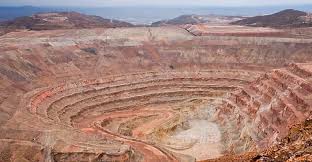
Ministry of Coal is organizing the Star Rating Awards Ceremony, Stakeholder Consultation on Mining Developers ...
The Ministry of Coal has received an overwhelming response for the coal mines offered under ...
Year-wise quantity and value of import of top ten major minerals (which account for over ...
The Central Government has amended the Mines and Minerals (Development and Regulation) (MMDR) Act, 1957 ...
The Central Government has taken up several initiatives for promoting exploration and mining of Critical ...
The index of mineral production for the month of March 2024 was 156.1, which is ...
The third tranche of E-auction of Critical & Strategic Minerals was launched by the Ministry ...
Karnataka and Rajasthan launched auction of Exploration Licence (EL) for critical and deep seated minerals ...
The index of mineral production of mining and quarrying sector for the month of December, ...